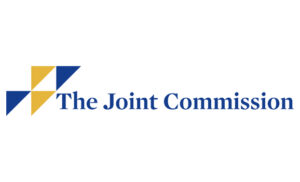Patient falls, wrong surgeries, care delays lead rise in sentinel events
Editor's Note
Sentinel events reported to The Joint Commission increased by 12% in 2024, with patient falls once again leading the list of serious adverse events followed by wrong surgeries. The Joint Commission released the data in an annual review July 9.
Wrong surgery events increased 13% from the previous year to 127 reports, constituting 8% of all events. Most involved wrong-site procedures (68%), with incorrect laterality cited in over half of those. Nerve blocks, urologic procedures, dental extractions, and spinal surgeries were among the most common. Of all wrong surgery events, 51% resulted in temporary severe harm and 36% in permanent harm. No deaths were reported in this category.
At the top of the list, falls accounted for 776 of the 1,575 events reported—up from 672 in 2023—and made up 49% of all events. Of these, 503 resulted in severe harm and 51 in patient death.
The rest of the list of most frequently reported sentinel events includes delays in treatment (8%), suicide or death from self-inflicted injury (8%), unintended retention of foreign objects (8%), and workplace violence-related incidents (4%). These categories, along with falls and wrong surgeries, made up 85% of all reports.
Outcomes across all reported sentinel events included death (21%), severe harm (49%), moderate harm (21%), mild harm (5%), psychological harm (2%), and no harm (2%). Among events that resulted in death, patient suicide/self-injury accounted for 37%, followed by delays in treatment (23%), patient falls (15%), perinatal events (4%), and clinical alarm failures (4%).
Most falls occurred during ambulation (31%), getting out of bed (30%), or toileting (18%), and 56% involved patients aged 70 or older. Head and brain injuries were the most common harms (38%), followed by hip fractures (25%) and leg fractures (21%). Leading contributors included failure to follow fall mitigation policies and poor team communication or shared situational awareness.
Delay in treatment events rose 56% from 2023 to 126 events in 2024. These were the second most common cause of death among sentinel events, with 60% of such delays resulting in death. Nearly half involved delayed response to patient deterioration, such as missed cardiac rhythms or failure to initiate rapid response. Common contributing factors included nonadherence to monitoring protocols and inadequate clinical recognition.
There were 122 reports of suicide or death from self-injurious behavior, 75% of which occurred either during behavioral health treatment or within seven days of discharge. Of these, 70% occurred within seven days of inpatient or ED discharge, with the largest proportion occurring 1–3 days post-discharge. Hanging/ligature was the most common method. Contributing factors included lack of shared understanding among team members and gaps in policy adherence.
Unintended retention of foreign objects was reported 119 times, up from 99 in 2023. Sponges were the most frequently retained item (34%), especially in obstetrics and gynecology. Other items included device fragments, guide wires, and instruments. Forty-three percent of cases resulted in severe harm. Leading causes included failure to follow count protocols and breakdowns in team communication.
Violence-related sentinel events—including physical assault, sexual assault, and homicide—accounted for 65 reports. Physical assaults made up just over half, with patients most often assaulting other patients or staff. Sexual assaults were most commonly patient-on-patient. Emergency departments, medical floors, and psychiatric units were the most frequent settings. Contributing factors included insufficient training in behavior recognition and unclear team roles.
The Joint Commission emphasized that while the number of reports increased in most categories, including falls, wrong surgeries, and delays in treatment, violence-related events slightly decreased from 2023. Across all categories, recurrent themes in contributing factors included failure to follow safety protocols, insufficient team communication, unclear roles and responsibilities, and gaps in clinical competency.
Read More >>

 Free Daily News
Free Daily News